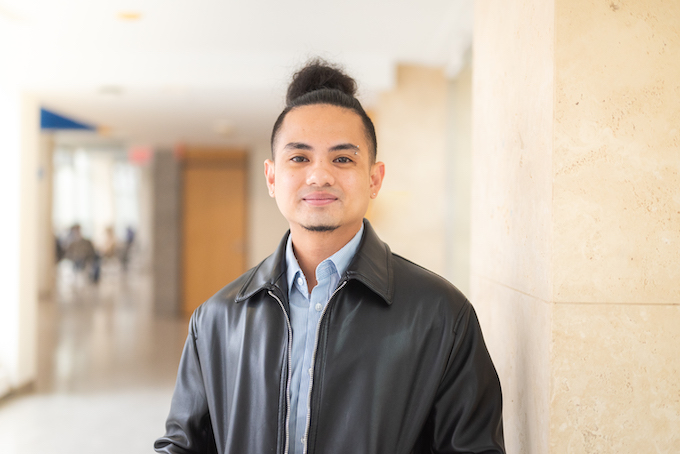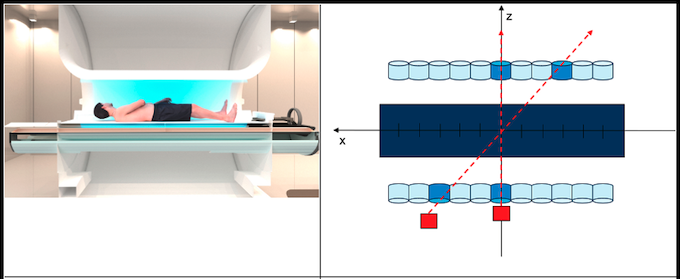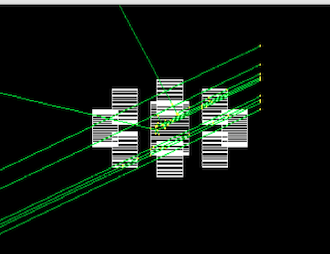Revin Toquero: Rising above as an aspiring physicist

Revin Toquero (Medical Physics '22) learned to be resilient and to thrive as an undergraduate student.
If you’re a new(-ish) undergraduate who’s finding the transition to university a bit rocky, you’re not alone. Four years ago, Ryerson medical physics student Revin Toquero was in the same boat. Things got so rough that he even landed in academic probation during his second term. That was a major wake-up call.
Toquero soon regained his footing, caught the research bug, and now wants to go all the way — from master’s degree to PhD, to residency training and beyond. His undergraduate thesis course was a key turning point. In a recent interview, Toquero chatted about the neat, new technology he’s been working on, why he blossomed under mentorship, and how he thinks fellow students can learn to thrive.
You’re doing research with a top Canadian hospital. How amazing is that?
It’s just crazy! I got to work with Sunnybrook Hospital’s Odette Cancer Centre under Dr. Humza Nusrat, a medical physicist who’s also Ryerson alumni. I’m developing simulation experiments to test his new device, which uses plastic scintillators to measure in real time how much radiation a cancer patient is absorbing inside an MR-Linac machine — literally while lying there on the treatment table.
The scintillators are crystals that sparkle after absorbing radiation, which makes radiation visible as light pulses. We then measure the difference between light entering and exiting a patient’s body, which tells us how much radiation they absorbed.

(left) Depiction of cancer patient treated inside an MR-Linac machine. A scintillator tube glows blue, allowing the radiation absorbed to be measured in real time.
(right) Geometry of a multi-ring scintillator structure. Scintillators (blue) emit visible light as radiation beams (red) enter and exit the patient on the treatment table.
Why is this innovation so important?
It usually takes a team consisting of oncologists, medical physicists, and radiation therapists two weeks to plan how much radiation to administer, and then conduct quality assurance tests. But two weeks later, the patient’s anatomy may have changed and the dose may no longer be optimal.
Using an MR-Linac, this problem is solved by imaging and treating in the same session (which lasts for around 45 minutes). The challenge is that in this new treatment paradigm, it’s difficult to conduct quality assurance with the same rigour. By using plastic scintillators, the team can make sure that the right amount of radiation is going to the tumor and healthy tissues, all in real-time.
What was your role in the research?
I conducted theoretical tests of the scintillator device. I learned to use GEANT4, a simulation software, to create models of the device. Within that simulated lab environment, I tested many configurations — single versus multiple scintillator rings around the patient’s body, circular versus square arrangements, etc. Eventually, a circular, multi-ring arrangement worked best. Dr. Nusrat is now testing in a real, physical lab using a phantom (or synthetic replicas of a patient). If my results match his clinical results, we can start building a device prototype.

Computerized simulation of a single plastic scintillator ring. Green rays represent visible photons produced by the scintillators as radiation enters and exits a cancer patient.
You overcame academic probation and started thriving. Any tips?
- Don’t let low marks kill your morale: You need to rise above failure. Don’t tell yourself that you can’t do this, or that you’re terrible. First year is hard, but next year is a whole new year.
- Troubleshoot on yourself: You won’t catch up unless you learn from your own mistakes. Instead of looking away, find out exactly where you went wrong. Then, fix bad habits and build better ones, like self-discipline. By doing that, I made a complete 180-degree turnaround.
- Stay engaged: My fourth-year thesis was a huge learning experience and I discovered how cool research is. I began reading academic papers — the more I read, the more I understood and became interested. Creating new things and seeing how it applies in real-world clinics has been super motivating.
"My undergraduate thesis was a huge learning experience. Looking back, I've learned so much over the last four years."
Mentorship had a huge impact on you. How so?
The one-to-one interaction with Dr. Nusrat was amazing. He walked me through so many things — like how to write proposals and how to present properly. I practised my thesis defence for him seven times before actually doing it in front of the review committee! He really inspired me and I progressed so much with the extra attention and help.
What's next after graduation?
Before fourth year, I wasn’t sure. But my thesis turned out to be such a fun experience. Dr. Nusrat and I also talked a lot about his profession, what it’s like in clinic, and different career paths. I finally told him that I want to go for it — the entire path to becoming a medical physicist. I was accepted into the master’s program for September, with two possible research topics: ultrasound thermometry to treat cancer, or using gold nanoparticles in targeted drug delivery. My undergraduate experience has been truly life changing!
In case you missed it, check out the interview with Dr. Humza Nusrat.